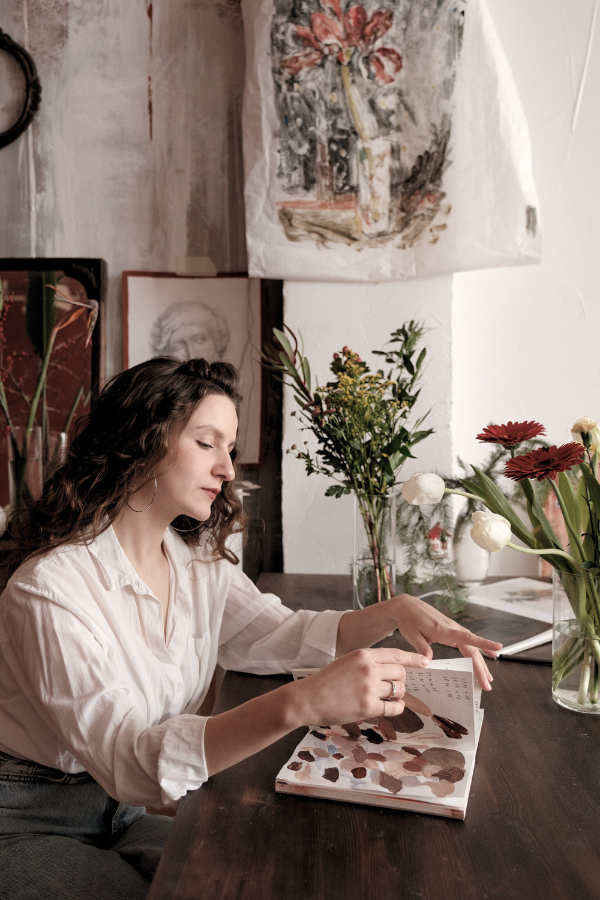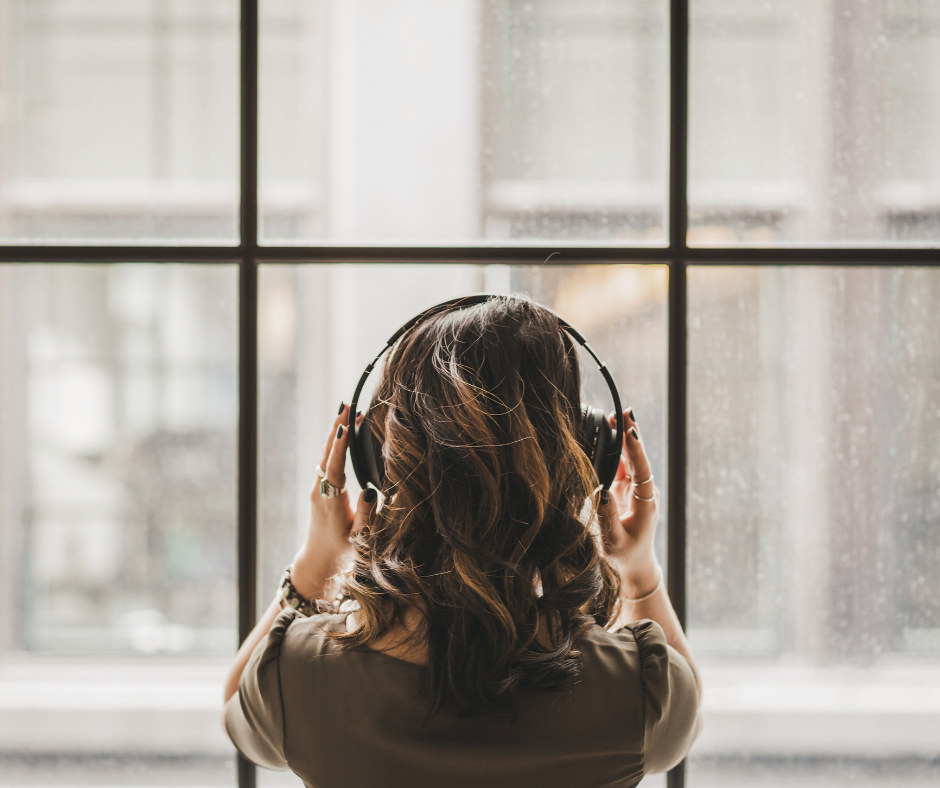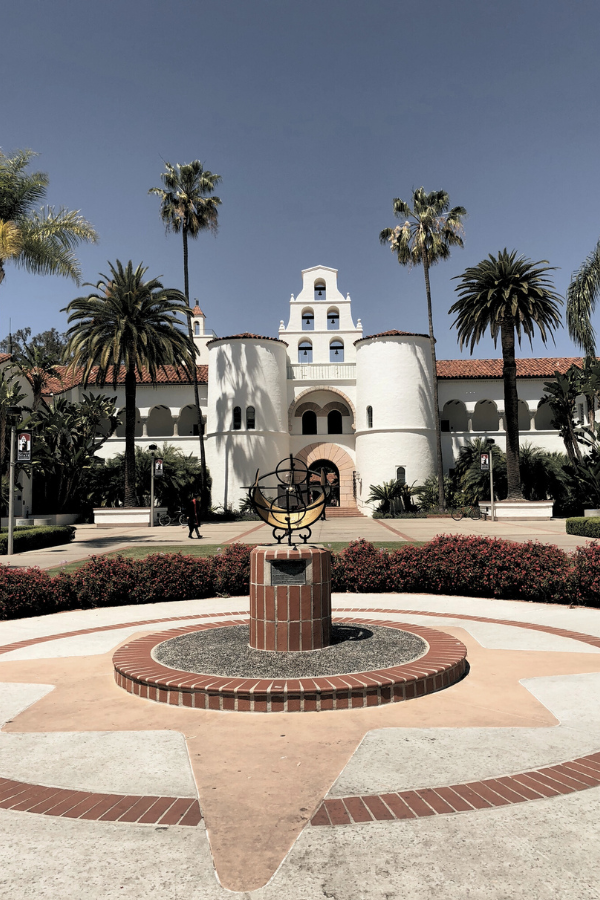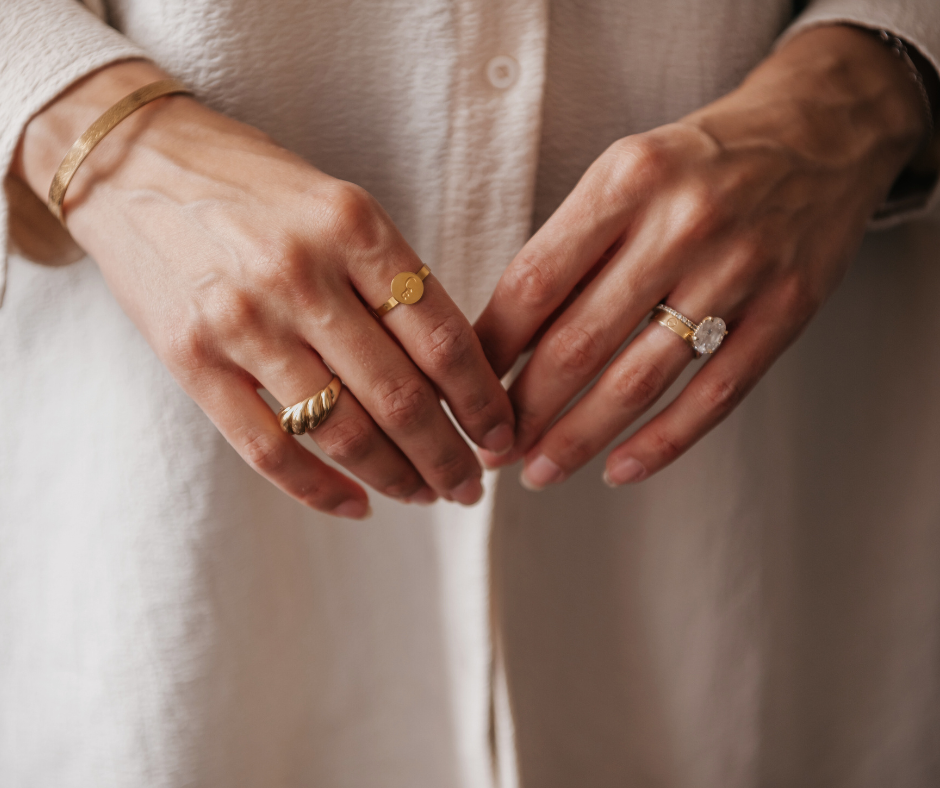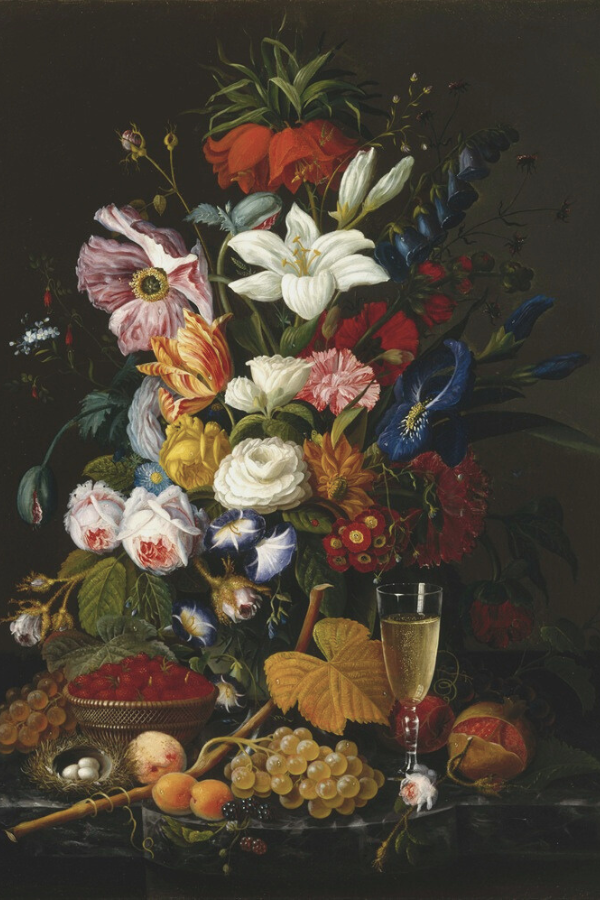
Start Stitching: the Best Sewing Machines for Beginners
Summary
Reflection Questions
Journal Prompt
Selecting the right beginner sewing machine is perhaps the most important choice you’ll make when starting in sewing. The ideal machine should be user-friendly, offering features that facilitate learning and provide a solid foundation for developing sewing skills. It is important to look for beginner sewing machines with features tailored for newcomers, such as simple setup procedures, basic stitch functions, and some automatic features like threading and buttonholes, to reduce the initial learning curve. Considering the machine’s adaptability to future skill levels is also wise. You want it to continue to be useful as your sewing abilities advance. Try to choose a sewing machine that meets current needs while allowing for growth in sewing proficiency. Read on to learn all about the best sewing machine for beginners!
What Are the Different Types of Sewing Machines?
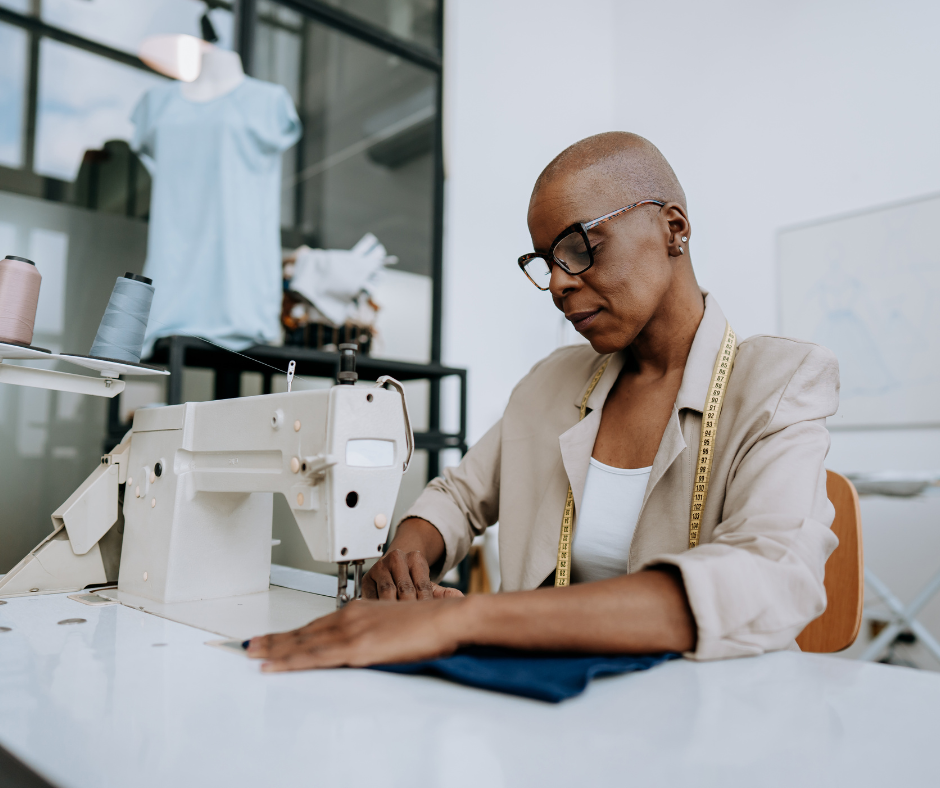
Sewing machines come in a wide range of types, each designed for specific sewing needs and skill levels. Understanding the differences between them can help you choose the best machine for your projects. Here are the most common types of sewing machines and what they offer.
Basic Sewing Machines
A basic sewing machine is ideal for simple tasks like hemming curtains or mastering that buttonhole stitch. They’re typically treadle or mechanical sewing machines and have limited stitch options, making them suitable for occasional use.
Hobbyist Sewing Machines
These machines offer more stitch choices and can be either mechanical or computerized. Whether a computerized machine or mechanical, these are designed for enthusiasts who enjoy various sewing projects, providing a good balance between features and cost. Such machines come with a wide variety of sewing tools (including an automatic thread cutter).
Beginner Quilting Machines
These cater to those new to quilting, offering features like drop-feed dogs and decorative stitches. A quilting machine will be available in treadle, mechanical, and computerized types, accommodating a range of quilting projects without breaking the bank.
Save $300 on the Venture for $699! Valid through 10/31
Professional Quilting Machines
These computerized sewing machines are for serious quilters, offering advanced features to take quilting to the next level. They can be mechanical or computerized and are capable of handling large quilts with ease.
Embroidery Machines
An embroidery machine specializes in adding embroidered details to clothing and other items. They range from basic models to advanced machines that can download and stitch computer-generated designs.
Serger (Overlock) Machines
These are used mainly for garment making, performing stitching, fabric trimming, and overcasting simultaneously for professional finishes. They vary from 2 to 4 thread models, suitable for both household and industrial use.
Portable Sewing Machines
These are compact and lightweight, ideal for taking to classes or sewing groups. Despite their size, they don’t compromise on power or functionality.
Double-Needle Sewing Machines
These feature two needles and bobbins for creating parallel stitches, allowing for decorative stitching and stronger seams.
Industrial Sewing Machines
These include various specialized machines like flat bed, cylinder bed, and post bed machines. These are designed for high precision, speed, and durability, catering to professional garment and shoe making, as well as other industrial sewing projects.
Here’s What to Look for in Your First Sewing Machine
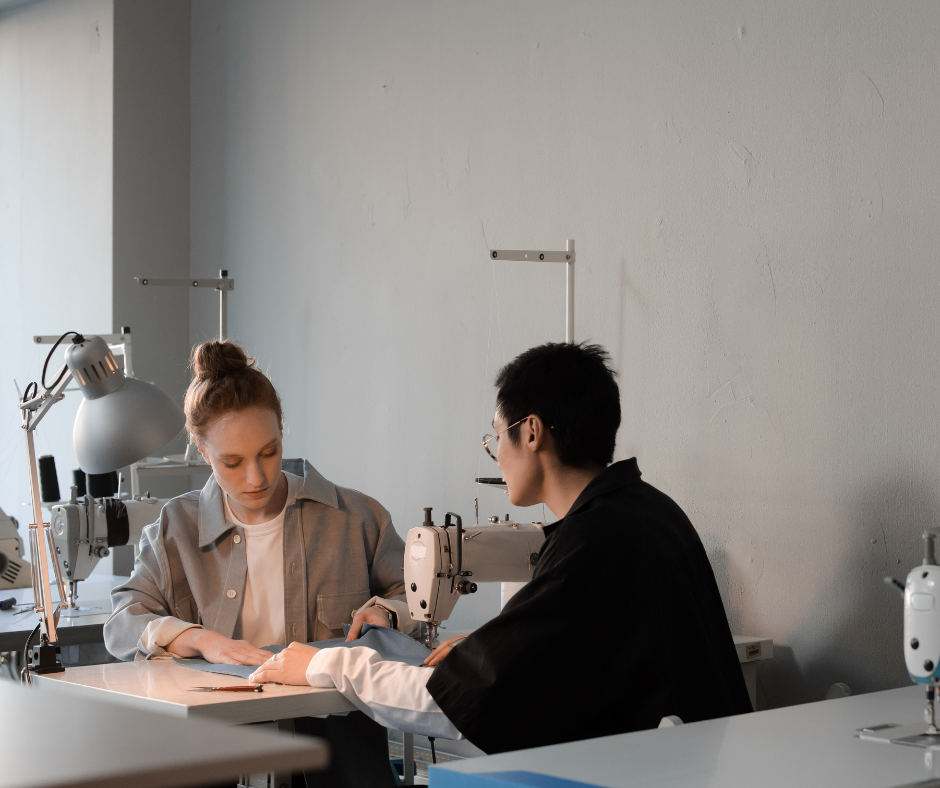
Most sewing machines have a bit of a learning curve. Don’t make it harder on yourself! A good beginner’s sewing machine should strike a balance between being user-friendly and offering enough features to allow for skill development. When selecting your first sewing machine, prioritize features that will make the learning process enjoyable and allow for growth as you become more experienced.
Don’t forget to consider your budget and the versatility of your machine for future sewing projects. For example, you might look into entry level embroidery machines if that is the focus of your interest in sewing. A basic sewing machine might not always be right for you. The best beginner sewing machine will meet your goals as well as your skill level.
Ease of Use
A sewing machine that is straightforward to set up and operate is vital for beginners. Features such as clear labeling of parts, an intuitive layout of controls, and easy access to settings can significantly enhance the learning experience.
A well-detailed manual or online tutorial is an indispensable resource for novices, guiding them through the setup process, explaining each feature, and offering troubleshooting advice. Machines designed with user-friendliness in mind can make sewing a more enjoyable and less intimidating hobby for newcomers.
Fuel your creative fire & be a part of a supportive community that values how you love to live.
subscribe to our newsletter
*please check your Spam folder for the latest DesignDash Magazine issue immediately after subscription

Automatic Features
Modern sewing machines come with several automatic features that streamline the sewing process. Automatic threading saves time and alleviates one of the more tedious aspects of sewing, especially for those with less steady hands or impaired vision. Drop-in bobbin systems simplify the setup and are generally more user-friendly than their front-loading counterparts.
One-step buttonholes automate what can be a complex task, ensuring uniform and professional-looking results with minimal effort. These features collectively reduce setup time and beginner frustration, making the sewing experience smoother and more enjoyable.
Stitch Options
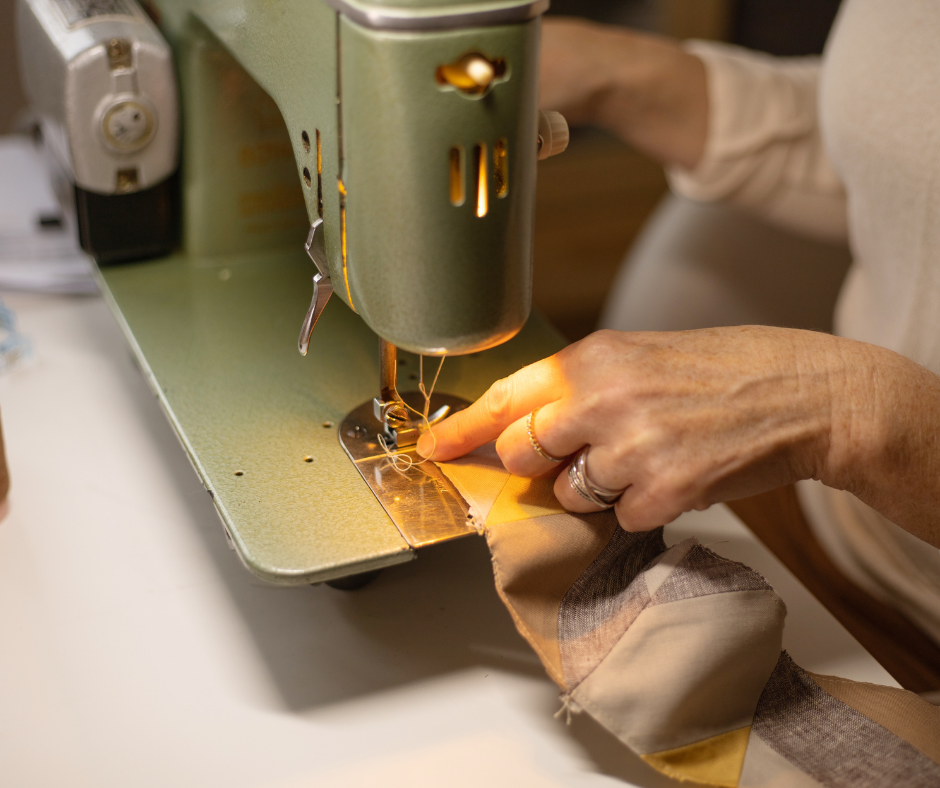
For beginners, a multitude of stitch options can be overwhelming and unnecessary. Initially, essential stitches such as straight, zigzag, and buttonhole stitch are sufficient for a wide range of projects.
However, as skills develop, the ability to experiment with more decorative and complex stitches becomes valuable. Choosing a machine that offers both simplicity for starters and a variety of stitches for advanced projects can provide longevity and creative freedom as one grows in their sewing journey.
Weight and Size
The portability of a sewing machine is an important consideration for those who attend sewing classes or participate in sewing groups. Lightweight and compact machines are much easier to transport and set up outside the home. They offer the flexibility to sew in various environments without the hassle of moving heavy equipment, making them ideal for sewists on the go.
Build Quality
Durability is a key factor in selecting a sewing machine. Machines constructed with a heavy-duty metal frame are typically more stable, capable of handling various fabric types, and built to last longer. High build quality ensures that the machine can withstand frequent use and the rigors of different sewing projects, providing better value for money in the long run.
Adjustability

The ability to adjust stitch length, width, and tension is crucial for tailoring the sewing machine’s performance to specific projects. These adjustments provide more control over the final appearance and quality of stitches, allowing for customization and experimentation. As sewists gain experience, the importance of these adjustable settings increases, enabling more precision and versatility in sewing.
Accessories You Might Need
The accessories included with a sewing machine can significantly enhance its versatility and value. Basic accessories, such as various presser feet, enable sewists to undertake a broader range of techniques and projects without the need for additional purchases.
A good selection of accessories allows beginners to explore different aspects of sewing and discover new interests within the craft.
Your Budget for a Beginner Sewing machine
Establishing a realistic budget is crucial when choosing a sewing machine. Opting for the cheapest model may limit features and durability, potentially leading to the need for an upgrade sooner than expected.
Conversely, the most expensive models may offer advanced features that are not necessary for beginners. A balanced approach, considering both current needs and potential future requirements, can help in selecting a machine that offers the best value.
Reviews and Recommendations
Researching and reading reviews from both beginners and experienced sewists can provide valuable insights into a sewing machine’s performance, reliability, and ease of use. User reviews often highlight practical aspects and potential issues not covered in product descriptions, offering a more comprehensive understanding of a machine’s suitability for different skill levels and projects.
Future Needs
Consideration of future sewing needs is essential when selecting a machine. As skills develop, the demand for more advanced features and stitch options may grow.
Choosing a machine that can accommodate evolving skills—with a broader range of stitches, capabilities for different fabric types, and additional accessory compatibility—ensures that the machine remains useful and enjoyable to use for years to come.
These Are the Best Sewing Machines for Beginners
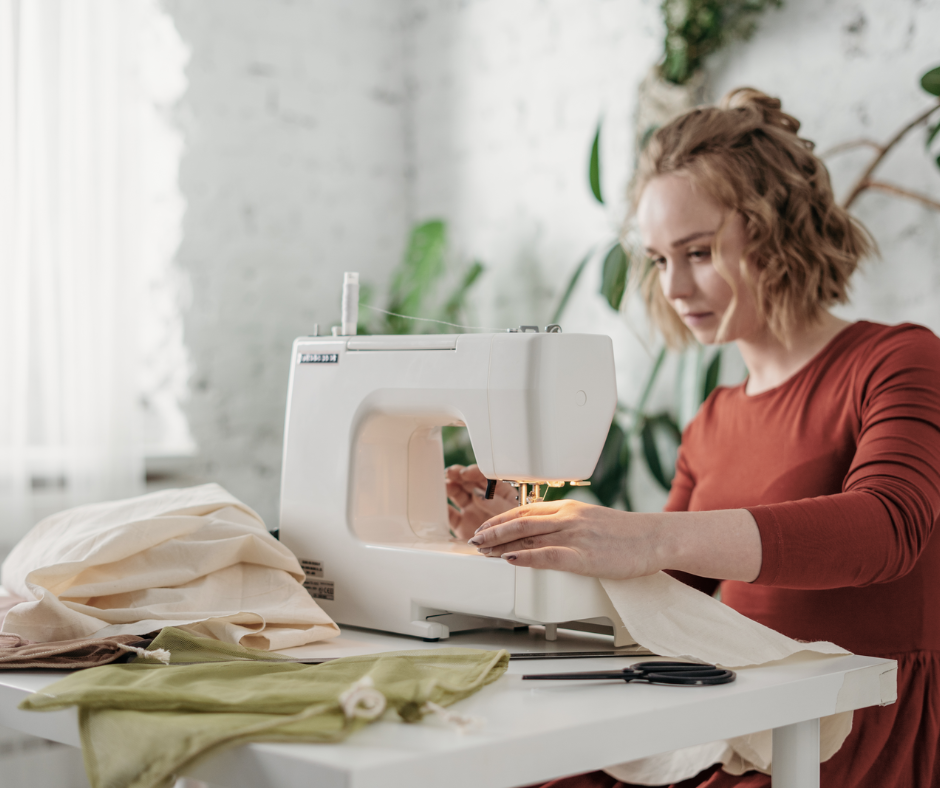
Below are ten highly recommended sewing machines for beginners, based on various reviews and features suitable for newcomers to sewing. The following sewing machines were selected based on their ease of use, versatility, and features that cater specifically to beginners, ensuring a smooth and enjoyable learning experience in sewing.
Bear in mind that the best sewing machine is different for everyone. To find the perfect beginner sewing machine, we recommend reading your own reviews and testing machines through in-person sewing classes or workshops at machine shops or fabric stores like JOANN.
Janome Sewist 725S
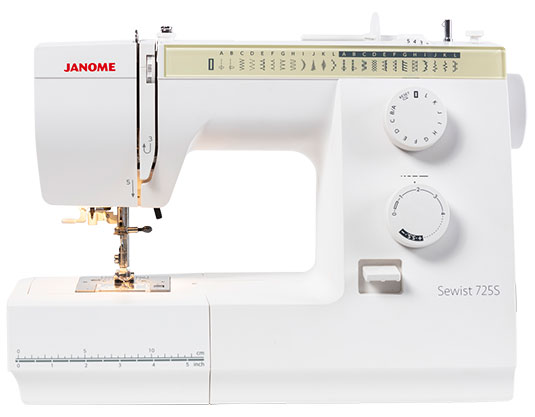
The Janome Sewist 725S is renowned for its straightforward operation, making it an excellent choice for beginners. With 23 built-in stitches, it offers a variety of options for basic and decorative sewing. The inclusion of a VIP package provides essential accessories for starters, enhancing the overall sewing experience.
This mechanical machine is celebrated for its ease of use, with well-marked and conveniently located levers and dials that allow for simple adjustments of stitch length, width, tension, and presser-foot pressure. The free-arm capability and a drop-feed system for quilting add to its versatility, making it suitable for a wide range of projects from garments to quilting.
The robust build quality of the Janome Sewist 725S, combined with its clear bobbin cover and jam-proof bobbin system, ensures a smooth sewing experience for beginners. Its comprehensive accessory pack, including multiple presser feet and a hard cover for machine protection, underscores the machine’s value.
This combination of simplicity, functionality, and growth potential makes it an outstanding choice for those new to sewing, offering just the right balance between basic functionality and features that allow for skill development as users become more comfortable with their craft.
SINGER MX60

The SINGER MX60 is designed with simplicity and ease of operation in mind, making it particularly suitable for young sewers, including kids and teens. Its mechanical nature simplifies the sewing process, offering 6 built-in stitches that cover the essentials for beginners.
This model emphasizes straightforward threading and stitch selection, making it less daunting for novices and fostering a rewarding sewing experience. The MX60’s lightweight and compact design, coupled with its durable metal frame, ensures both portability and stability during use.
One of the MX60’s notable features is its beginner-friendly approach to sewing, with pre-set stitch lengths and widths that remove the guesswork and allow for easy adjustments of thread tension. This simplicity extends to maintenance tasks as well, making it a practical learning tool for young sewers.
Despite lacking some advanced features like an automatic needle threader, its overall functionality and affordability make the SINGER MX60 an excellent entry point into sewing for the younger audience, laying a solid foundation for developing sewing skills.
Janome C30
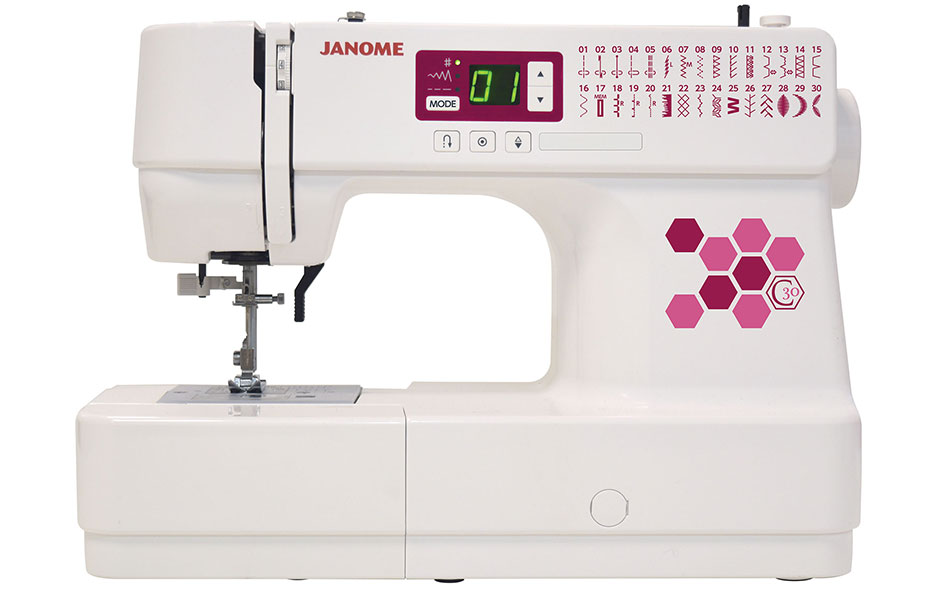
The Janome C30 stands out as a lightweight, computerized sewing machine that integrates technology with ease of use, making it ideal for beginners who are not intimidated by digital features. With 30 built-in stitches, it offers a broad range of sewing options including basic, decorative, and buttonhole stitches, catering to a variety of projects. Its computerized system includes a jam-proof, drop-in bobbin and an easy-to-read LCD display, enhancing the sewing process with a level of convenience and precision that manual machines cannot match.
The C30’s user-friendly design is complemented by its portability and ease of storage, appealing to beginners who might have limited space. The inclusion of features typically found in more advanced machines, such as a one-step buttonhole maker, positions the Janome C30 as a machine that beginners can grow with, offering more complex features as their skills develop.
This balance of simplicity, technological integration, and potential for growth makes the C30 a compelling choice for newcomers to sewing who prefer a more modern approach.
Singer M3500

The Singer M3500 is a mechanical sewing machine that balances ease of use with a range of features conducive to beginner sewers. It offers 32 built-in stitches, including basic, decorative, and stretch stitches, along with an easy one-step buttonhole feature. This diversity allows beginners to experiment and grow their skills across a variety of sewing projects. The M3500’s design emphasizes manual control through simple dials, making stitch selection and adjustments straightforward for those new to sewing.
Durability is a key aspect of the Singer M3500, with its heavy-duty metal frame ensuring the machine can handle larger projects down the line. The automatic needle threader and the machine’s ability to adjust stitch width and length add a level of convenience that can greatly benefit beginners.
Its blend of manual simplicity and essential features, paired with its durability, makes the M3500 a solid investment for beginners looking for a machine that can grow with them as they advance their sewing skills.
Janome Derby
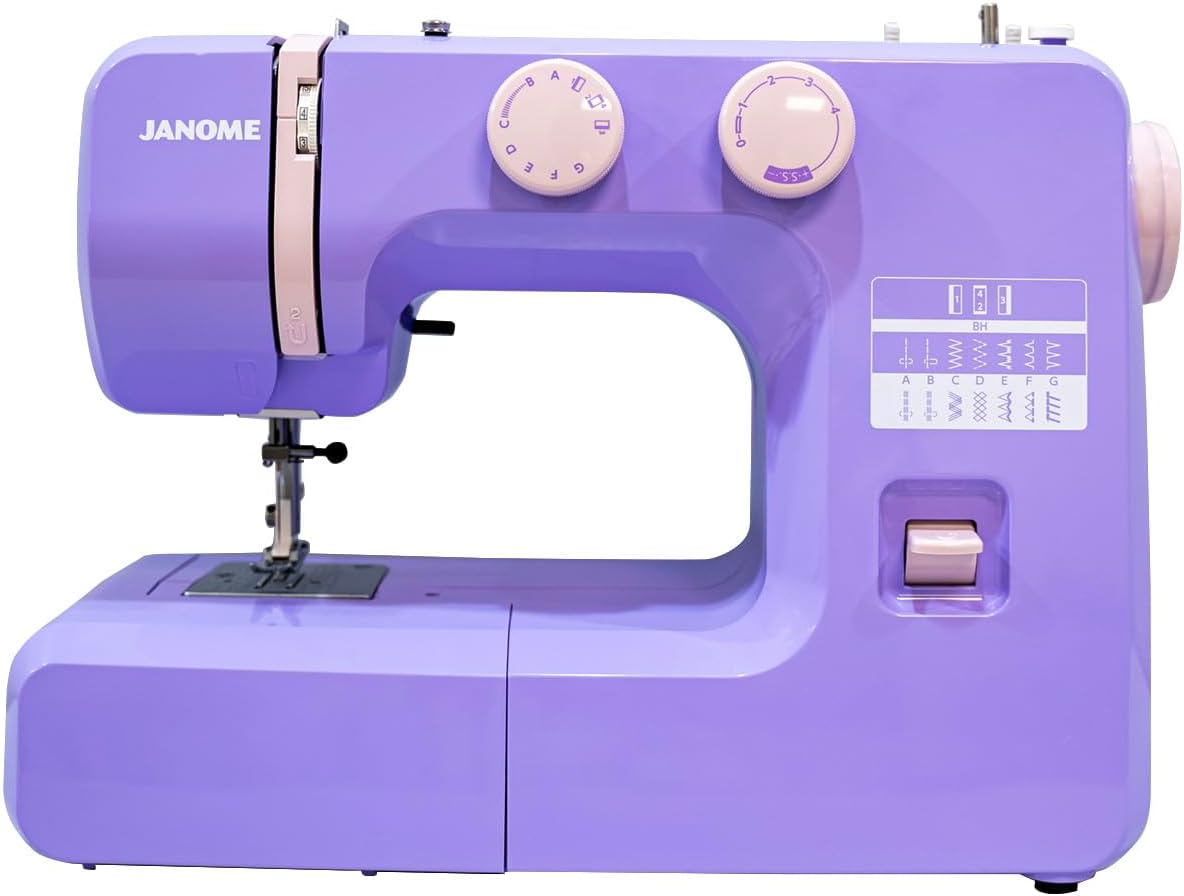
An adorable and high quality sewing machine, the Janome Derby stands out for being exceptionally affordable and lightweight, making it particularly attractive to budget-conscious beginners and those who may need to transport their machine to classes. Despite its low price point, the Derby does not skimp on essential features, offering 10 built-in stitches that cover basic sewing needs. Its compact size and fun, colorful design appeal to beginners of all ages, making sewing an accessible and enjoyable hobby.
Ease of use is a hallmark of this home sewing machine, with features like a drop-in bobbin and clear threading diagrams that simplify the setup process. This machine is not only easy to use but also encourages creativity and learning through sewing, without overwhelming beginners with too many options.
The inclusion of built-in accessory storage and the machine’s portability further add to its appeal for newcomers, making it an excellent choice for those seeking an entry-level sewing machine that is both practical and fun.
Singer 9960

The Singer 9960 Quantum Stylist is a feature-rich, computerized sewing machine that offers an extensive selection of 600 built-in stitches, making it suitable for ambitious beginners ready to dive deep into sewing and quilting projects.
This machine’s vast array of stitches includes basic, decorative, and stretch stitches, along with monogramming capabilities, providing a broad canvas for creative expression. The inclusion of an automatic needle threader, speed control, and a built-in thread trimmer enhances the sewing experience, offering convenience and efficiency.
What sets the 9960 apart is its ability to cater to both beginners and more experienced sewers with its comprehensive feature set and ease of use. The machine’s computerized system, complete with an LCD screen, makes stitch selection and customization intuitive.
Its ability to handle a wide range of fabrics and projects, combined with the monogramming function and extension table, positions the Singer 9960 as a versatile sewing machine that beginners can grow with, exploring new sewing techniques and projects as their skills progress.
SINGER Start 1234
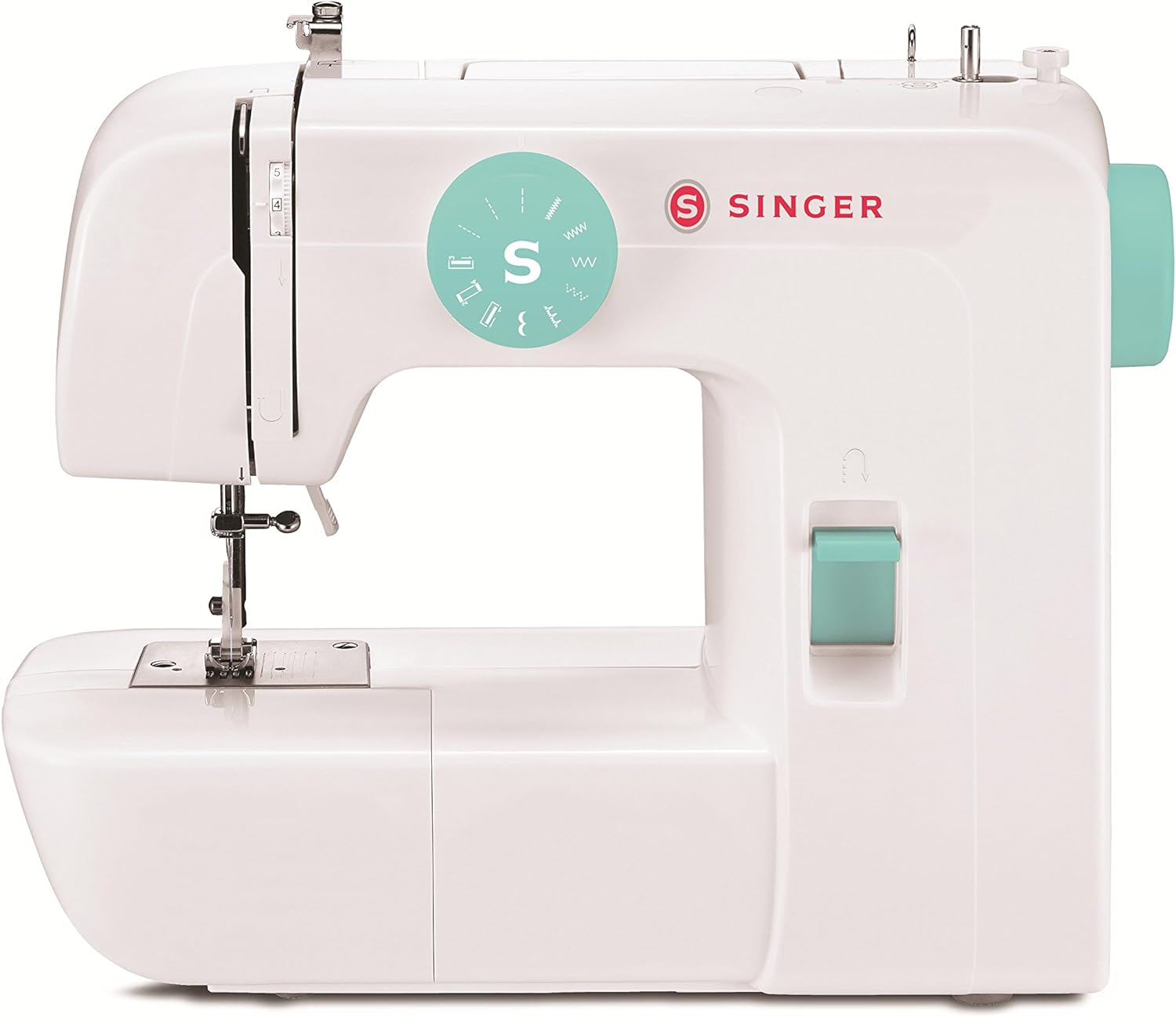
The SINGER Start 1234 is designed with the beginner in mind and might be the best value sewing machine on this list. This machine offers a straightforward sewing experience through its basic yet versatile features. It comes equipped with 6 built-in stitches, including a 4-step buttonhole, which provides enough variety for beginners to undertake various projects.
Its portability and lightweight design make it ideal for those with limited space or the need to transport their machine. Additionally, the machine includes an automatic bobbin winding system and easy stitch selection, which further simplifies the learning process for newcomers.
The affordability of the SINGER Start 1234, paired with its user-friendly features, makes it an attractive option for beginners. It comes with essential accessories, including various feet and bobbins, that enable new sewers to start their sewing journey without the need for immediate additional investments.
The simplicity of the machine, focusing on basic functionality without overwhelming beginners with too many options, ensures a gentle learning curve and a satisfying entry into sewing.
Brother XM2701
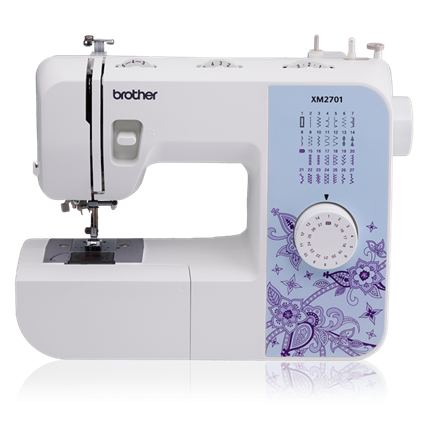
The Brother XM2701 is an excellent entry-level machine that offers a mix of simplicity, versatility, and value. Brother sewing machines are known for having shallow learning curves, which makes them perfect for beginners. It features 27 built-in stitches, including decorative and quilting stitches, and comes with 6 quick-change sewing feet, covering a wide range of sewing needs.
The machine is noted for its ease of use, with an automatic needle threader, a jam-resistant top drop-in bobbin, and a brightly lit LED work area enhancing the sewing experience. The inclusion of an instructional DVD and free technical support provides beginners with the resources to get started confidently.
This machine’s appeal lies in its balance of beginner-friendly features and the potential for growth. The wide variety of stitches and accessories, combined with the machine’s reliability and affordability, offer new sewers a comprehensive toolkit for exploring different sewing projects.
Its portability and compact design also make the Brother XM2701 a practical choice for those with limited space or the need to move the machine regularly. Overall, it represents excellent value for money, providing the quality and versatility that beginners require to develop their sewing skills.
Janome Arctic Crystal
The Janome Arctic Crystal is a beginner-friendly, mechanical sewing machine that shines with its simplicity, portability, and eye-catching design. Its 15 built-in stitches provide a solid foundation for a wide range of sewing projects, from garment making to home decor and quilting.
The machine’s small size and light weight make it an excellent choice for young sewers or those with limited space. The Arctic Crystal is designed to be easy to set up and use, with a strong metal frame that ensures durability and stability during sewing. Its playful aesthetic, combined with its robust functionality, makes sewing approachable and fun for beginners.
Despite its straightforward design, the Janome Arctic Crystal doesn’t sacrifice quality or versatility. The adjustable stitch length and width, along with a four-step buttonhole, offer beginners the flexibility to experiment with different sewing techniques.
The machine’s emphasis on manual controls helps users learn the fundamentals of sewing machinery, setting a solid foundation for more complex projects in the future.
The Arctic Crystal’s blend of simplicity, durability, and creativity makes it an appealing choice for anyone looking to start their sewing journey on a positive note.
Brother CS6000i

The Brother CS6000i is a versatile, feature-packed, relatively heavy duty sewing machine that caters exceptionally well to beginners, offering a wide array of features that make it appealing for those starting their sewing journey. Its user-friendly design includes an automatic needle threader, a wide table for larger projects, and a speed control slider that helps manage sewing speed, making the learning process smoother and more enjoyable.
The CS6000i also boasts 60 built-in stitches, offering a generous variety for different sewing needs, from basic to decorative stitching, along with a one-step buttonhole feature for ease of use.
The machine’s computerized interface, with an LCD display for stitch selection, provides a modern sewing experience that is both intuitive and versatile. This, combined with the ability to adjust stitch length and width, ensures that beginners can easily customize their projects.
The CS6000i’s affordability, combined with its comprehensive set of features, makes it an excellent value for those new to sewing. Its portability and ease of storage further enhance its appeal, making it a highly recommended choice for beginners looking for a machine that can support their sewing aspirations as they evolve.
Tips for Transitioning from a Beginner Sewing Machine to a More Advanced Model
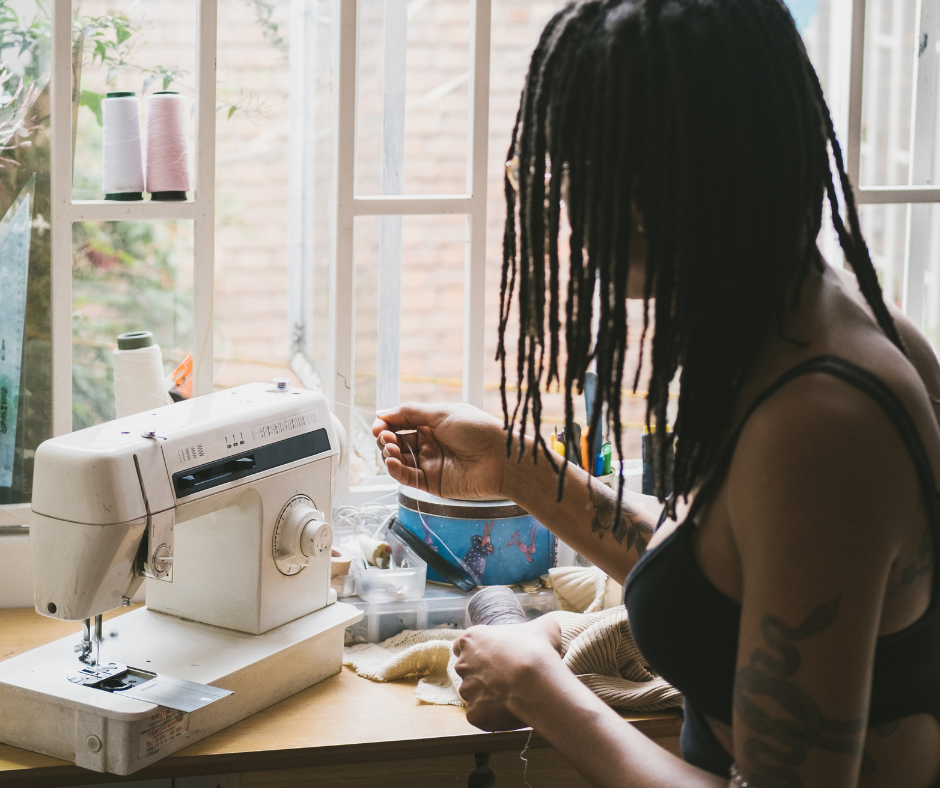
Transitioning from a beginner sewing machine to more complex machines can be an exciting step for anyone passionate about sewing. Below are a few tips and insights to help you make that leap smoothly.
Understanding the Differences
Beginner sewing machines are typically easy to use, with basic stitches and features that are straightforward to navigate. These machines are designed to handle simpler projects, like basic garments, repairs, or crafts.
As you look to advance, more complex machines offer a wider range of capabilities including embroidery, serging, quilting, and a vast array of stitches. They may also offer automatic features like thread cutting, tension adjustment, and stitch selection which can greatly enhance your sewing experience.
Choosing Your Next Machine
When transitioning to a more complex machine, assess what types of sewing projects you are interested in. This will guide you in selecting a machine that best fits your needs. For example, if you’re interested in making clothes, a machine with features that simplify garment construction (like different types of buttonhole settings or adjustable presser foot pressure) would be ideal.
If quilting is your passion, look for a machine with a larger work area and specialized quilting features. Visiting local sewing shops and trying out different machines can be very helpful.
Advancing Your Skills
To get the most out of a sophisticated sewing machine, upgrading your skills is essential. Look for sewing classes that cater to intermediate or advanced sewers. These can be found in community colleges, adult education centers, and specialty fabric stores. Workshops and classes that focus on specific techniques such as embroidery, pattern making, or textile arts can also be beneficial.
Online platforms like YouTube, Craftsy, or Udemy offer a plethora of tutorials that can help you master new sewing skills at your own pace. These platforms often have detailed courses designed for intermediate to advanced levels which can be very useful when you’re learning to navigate the features of a more advanced machine.
Joining a Community
Joining a sewing community, whether online or in person, can also facilitate your transition. Being a part of a community allows you to share tips, ask questions, and get feedback on your projects.
Many sewing communities organize meetups, swap patterns, and share resources that could be very useful as you explore more complex sewing projects.
Practice Makes Perfect
Lastly, don’t be afraid to experiment and practice. The more you use your new machine, the more comfortable you will become. Start with simpler projects to build your confidence, and gradually move to more complex ones as your skills develop.
Transitioning to a more complex sewing machine opens up a new world of creativity and possibilities. With the right tools, classes, and community support, you’ll be able to explore and enjoy your sewing journey fully.



